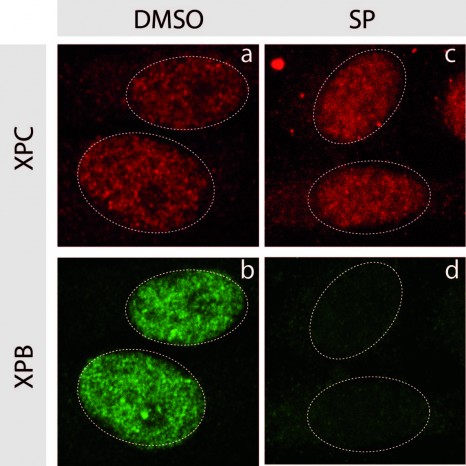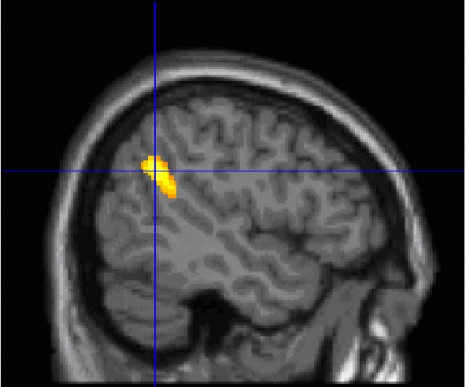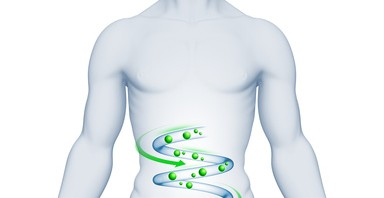In France, the levels of use of some psychoactive substances, especially alcohol, tobacco and cannabis, remain high among adolescents, despite progress in regulatory efforts to limit access to these products by minors, and regular prevention campaigns.
As part of preparing the Government Plan to combat drugs and addictive behaviours (2013-2017[1], the French Government’s Inter-Departmental Mission for the Fight against Drugs and Drug Addiction (MILDT) requested Inserm to prepare an overview of scientific knowledge regarding the susceptibility of adolescents (aged 10 to 18 years) to use psychoactive substances known to be consumed in significant amounts by young people (alcohol, tobacco and cannabis), as well as their susceptibility to develop other habits known to potentially cause problems (video/Internet games, gambling). The mandate from MILDT also included the analysis of strategies for effective prevention and intervention for this age bracket.

©Fotolia
To fulfil this remit, Inserm brought together a multidisciplinary group of experts in epidemiology, public health, human and social sciences, addiction, neuroscience and communication.
Analysis by the experts of data from the major surveys of use in France[2] and from the international scientific literature of the last ten years has enabled a better evaluation of the scale of the phenomenon in young people aged 10-18 years, and has helped to identify the major products involved and trends in use patterns, risk factors, and the main effects on health and associated social harm, and finally to describe those intervention strategies that have been evaluated, with a view to making recommendations to help prevent unsafe use and to help care for the adolescents involved.
The experts observed, in particular, a change in use and patterns of consumption of some psychoactive substances, such as, for example, the tendency toward occasional binge drinking that is developing among adolescents. Furthermore, they emphasise the greater sensitivity of this population to the neurotoxic effects of alcohol and cannabis compared to adults, something that makes adolescents especially vulnerable to the consequences of using these substances.
Adolescence, a period of vulnerability
Adolescence is accompanied by many physiological and physical changes, and is also a stage of complex psychological maturation and development. The young person progressively frees himself or herself from parental dependence, and develops a high level of social interaction; s/he seeks new experiences, which often include a certain resistance to established rules. Adolescence also constitutes a phase of curiosity, risk-taking and defiance.
Initiation into using legal psychoactive substances (alcohol/tobacco), as well as some illegal substances (cannabis etc.), occurs mainly during this period: only 6.6% of 17 year old adolescents have not tried any of these products. Adolescents show highly variable expectations/motives, usually differentiated along social and gender lines. They show little sensitivity to warnings regarding long-term risks to health, as they perceive them only as very remote risks that do not really concern them.
Most of the studies emphasise that for adolescents a positive first experience of psychoactive substances may influence subsequent use, encouraging regular use and the potential development of dependence.
The adolescent brain is more vulnerable to psychoactive substances than the adult brain. It has the distinction of being in a state of transition toward the adult state. The processes of brain maturation (which continue until approximately 25 years of age) lead to a heightened degree of vulnerability in adolescents to the neurotoxic effects of psychoactive substances in general. One area of the brain, the prefrontal cortex, which allows decision making and adaptation of behaviour to the situation, is especially involved in this maturation during adolescence.
Regardless of the product under consideration, early experimentation and initial drug use increase the risks of later dependence and more subsequent harm overall.
Psychoactive substance use[3] and associated harm
There are distinctions between unsafe drug use (endangerment), abuse or harmful use (injurious to health), and dependence. The term “addiction” generally covers dependence, but this is point is still being debated. For some authors, addiction is characterised by the persistent inability to control a behaviour, and the continuation of the latter despite the knowledge and presence of its harmful effects.
In France, alcohol is the most consumed psychoactive substance in terms of level of experimentation, occasional use, and precocity of experimentation. In 2011, 91% of boys and girls had tried alcohol by the end of adolescence. In 2010, 58% of pupils aged 11 years stated that they had already tried an alcoholic drink.
Regular alcohol use (at least 10 times a month) is evident by the end of junior secondary school: in 2010, 7% of students in the 4th year of junior secondary school (approximate age 14-15) stated that they had consumed an alcoholic drink at least 10 times in the month prior to the survey. In 2011, 15% of boys and 6% of girls aged 17 years engaged in this regular drinking; however, daily alcohol consumption was observed in fewer than 1% of 17 year olds. A reduction in the difference between boys and girls can be noted between 2008 and 2011, as well as a slight increase in regular use.
Some participants had experienced alcoholic intoxication (drunkenness) from the start of secondary school. Among 4th year students at junior secondary school, 34% stated that they had already experienced such an episode. At 17 years of age, 59% of boys and girls stated that they had already been drunk in their lives, and 53% stated that they had been on a drinking binge (namely the consumption of at least 5 standard drinks on a single occasion) in the month prior to the survey. The rates of binge drinking in the month are continuing to increase: 46% in 2005, 53% in 2011.
In 2011, although France occupied a median position in Europe as regards binge drinking among 16 year olds, it was above the mean for regular alcohol consumption.
Harm and vulnerability among adolescents
Compared with adults, alcohol use among adolescents, especially massive intoxication, has more marked neurotoxic effects on the brain, both at the structural level (the production of new neurons/neurogenesis) and the functional level, as reflected by a greater interference with cognitive function (learning/memory). It has been documented that the morphological and functional impacts are greater for girls than for boys of the same age. The deficits observed in the medium term are proportional to the quantity of alcohol consumed.
Young people are less sensitive to the “negative” effects of alcohol (drowsiness, hypothermia, lack of motor coordination, etc.), but are more receptive to effects experienced as “positive” (disinhibition, facilitation of social interaction, etc.).
In 2011, more than 2 out of 3 (68%) 17 year olds had tried tobacco.
Tobacco is the psychoactive product most used on a daily basis in adolescence: 30% of girls and 33% of boys are daily smokers at 17 years of age. According to data from 2011, daily use can be seen from the start of secondary school (8% for 3rd year students (approximate age 13-14 years) and 16% for 4th year students (14-15 years). A small increase in daily smoking was seen from 2008 to 2011.
In 2011, France was among the European countries with the highest levels of smoking among 16 year olds.
Associated harm
Apart from the high risk of dependence, tobacco has many well-known long-term consequences for health (respiratory and cardiovascular disease, cancers, etc.).
In France, cannabis is the illegal substance most used during adolescence. In 2011, 42% of 17 year old adolescents had already smoked cannabis at least once (39% of girls and 44% of boys). Boys were heavier users than girls, who tried the product at an older age.
Initial experimentation, while very rare at entry into secondary school, was observed in the final years of junior secondary school (11% of 3rd year students, 24% of 4th year students), and in nearly one in two senior secondary school students in 2011.
In 2010-2011, 2% of 4th year, 6% of 5th year, and 7% of final year secondary school students (approximately 16-18 years of age) were using cannabis regularly (at least ten times in the previous month). Of 17 year old adolescents, 5% showed a risk of problem use or even dependence in 2011: 7% of boys and 3% of girls.
France, together with Canada, the Czech Republic, Switzerland, the United States and Spain, were among the countries with the highest prevalence of cannabis use among adolescents in 2011.
Harm and vulnerability among adolescents
In the hours following cannabis use, observed cognitive impairment involves attention, reaction time, working memory, and executive function. Furthermore, there is a significant correlation between use and various “acting out” behaviours (attempted suicide, bulimia, unsafe sexual behaviours, etc.) due to lowered inhibition.
This cognitive impairment tends to disappear within a month of stopping use. In adolescents, some of this impairment may persist, including after weaning, especially if use began before the age of 15 years. Long-term cognitive impairment is observed in proportion to dose, frequency, duration of exposure and age at first use of cannabis.
Regular use of cannabis has long-term effects that may affect school results and personal relationships.
Finally, cannabis use may also precipitate psychiatric disorders (anxiety disorders, depression, symptoms of psychosis and schizophrenia) in adolescents. This risk of psychotic disorders may be influenced by certain genetic factors, age of exposure and pre-existing vulnerability to psychosis (family history).
- Other substances and polydrug use
– Psychotropic drugs and other illegal products
In 2011, 41% of 17 year olds stated that they had taken at least one psychotropic drug in their lives. The most frequently tried psychotropic drugs are anxiolytic drugs (15%), sleep-inducing drugs (11%), and antidepressants (6%).
Experimentation with illegal products other than cannabis, such as amphetamines (including ecstasy), hallucinogenic mushrooms, LSD, cocaine or heroin appears only at the end of adolescence, in proportions from 3% for hallucinogenic mushrooms and cocaine to 0.8% for heroin. Most of this experimentation declined over the period from 2008 to 2011, especially for ecstasy.
At 17 years of age, almost no regular use of illegal substances other than cannabis was seen. Only inhaled products such as adhesives, solvents or poppers showed relatively high levels of experimentation at this age (9% said they had tried the latter).
– Energy drinks and alcopops
Energy drinks are consumed alone or mixed with alcohol, such as pre-mixed drinks (alcopops), mixtures of soft drinks and strong spirits, ranging from 5 to 8% alcohol by volume. At all ages of adolescence, boys are more frequent consumers of energy drinks than girls. In France, consumption of energy drinks has gone from 20% in the 1st year of secondary school to 36% in the 5th year.
Consumption of premixed drinks remains relatively less frequent than that of other main categories of alcoholic drinks. The infatuation of young people, especially girls, with this type of drink, highly sweetened and flavoured to mask the alcohol content, has been curbed by the imposition in France of a very high tax specifically on these products.
The combination of energy drinks with alcoholic drinks has been identified as a source of risk—it increases the consequences of drinking, particularly the risk of unprotected sexual relations. Furthermore, there may be a link between consumption of energy drinks combined with alcohol and the subsequent development of alcohol dependence.
– Polydrug use
At age 17, 4% of adolescents stated that they were daily tobacco smokers and regular consumers (at least 10 times per month) of alcoholic drinks, or daily smokers of tobacco and regular smokers of cannabis. Finally, 2% were regular polydrug users of tobacco, alcohol and cannabis.
Video/Internet game playing and gambling,[4] and associated harm
With regard to video/Internet games and gambling, one refers to social or recreational play or gambling (i.e. simple use), unsafe or problem play or gambling (i.e. abuse), and excessive or pathological play or gambling (i.e. dependence).
- Video/Internet game playing
In 2011, of the 80% of 17 year olds who stated having used the Internet in the previous seven days, approximately one in four used it for 2-5 hours a day; fewer than one in five for 5-10 hours, and one in ten used it for over 10 hours a day.
Depending on the country and the measurement method used, the prevalence of problem Internet use by adolescents may vary from 2 to 12%. In France, in 2011, the initial estimations show that 3-5% of 17 year olds may be involved.
Furthermore, 5% of 17 year olds may play video games for 5 to 10 hours a day. Although the total time spent playing games is higher for boys than for girls, the time spent in front of a screen is identical, since girls are heavier users of social networking.
While video games may have positive aspects, especially regarding the development of cognitive and spatial functions, they may also lead to a loss of control and behavioural problems. Among the different types of games, MMORPG (Massive Multiplayer Online Role Playing Games), usually played by boys, have been described as particularly addictive.
Of 17 year old players (all types of video games), 26% stated that they had encountered problems at school or at work, and approximately 4% stated that they had experienced money problems in the previous year because of their playing habits.
Associated harm
Apart from the time spent, which can sometimes prove to be very long, problems of a psychic and somatic nature may occur in cases of excessive use: sleep disorders, irritability, sadness, anxiety, isolation, deterioration in academic performance, problems with parents, etc. Problem use of video games may encourage use of substances (tobacco, cannabis, alcohol, energy drinks, etc.), and increase the risk of sedentary behaviour and overweight
In France as in most Western countries, gambling is illegal below the age of 18. However, according to international studies, minors do participate in gambling: 80% have already gambled in their lifetime, and 10-20% gamble weekly.
Initiation most often takes place in adolescence (even at the start of adolescence according to some authors), usually in the family circle; boys gamble more than girls, regardless of country studied or the reporting period.
In France, gambling among 17 year old adolescents was investigated for the first time in 2011: 44% had already gambled in their lifetime, and 10% had gambled that week. Of 17 year olds who had gambled in the previous week, 14% were gamblers in the moderate risk category, and 3% were excessive gamblers. Therefore, 1.7% of 17 year olds may be considered to have a moderate-risk or excessive gambling habit.
In France, gambling by adolescents mainly takes the form of scratch-cards and lottery tickets purchased from a tobacconist. The possibility of online gambling is especially attractive to young people, even minors. Nearly 14% of 17 year olds stated that they had gambled on the Internet at least once in the previous year.
Associated harm
Although the drift into addiction associated with gambling does not directly cause physical harm, it may have negative consequences (use of psychoactive substances, symptoms of depression and anxiety, suicide risk, financial loss, deterioration in academic performance, criminal activity, etc.). Studies evaluating harm from problem/pathological gambling in adolescence are still scarce, although it has been noted that the prevalence of problem/pathological gambling is higher among adolescents than adults.
Factors associated with problem use
Psychological factors (poor self-esteem, lack of self-confidence, etc.), socioeconomic, academic (disrupted schooling) and familial (intergenerational transmission of addictive behaviours) contribute to problem substance use or habits leading to addictive behaviour.
While adolescents from privileged backgrounds have higher levels of experimentation, young people from underprivileged social backgrounds or who have academic problems are at higher risk of engaging in regular excessive use of tobacco, alcohol or cannabis. Likewise, young people whose parents show addictive behaviours are at major risk of regular or excessive use: children of smokers are twice as often smokers themselves, children of excessive drinkers are twice as often regular drinkers themselves. It is the same for gambling.
Family cohesion (understanding between parents and children, parents’ knowledge of their children’s entourage and activities) reduces the risk of addictive behaviours in adolescents.
The experts also note the influence of the circle of friends and all the marketing products and advertising information produced by industries to encourage young people to buy legal addictive products (tobacco, alcohol, games in general). These advertisements and marketing tools may also limit the efficacy of prevention programmes aimed at young people.
Finally, the role of genetic factors in the risk of dependence needs to be emphasised. According to studies, a non-negligible share of the risk of developing an addiction might be attributable to genetic factors, and many candidate genes have been identified that are linked to addiction to individual substances.
Support for adolescents and prevention strategies
Supporting the adolescent in the community depends on early intervention and strategies for risk reduction. Early intervention involves acting as early as possible so that unsafe behaviour does not take hold; strategies for risk reduction aim to reduce harm without seeking abstinence. Support in a consultation room setting and hospital/residential treatment is aimed at reducing use or even complete weaning from use.
Free anonymous “Clinics for Young Users” (CJC in French), operating since 2004, are dedicated reception and treatment facilities for young users of psychoactive substances. These clinics offer scientifically validated care plans. “Motivational counselling,” carried out in an outpatient setting, is based on the need to highlight and support the adolescent’s motivation so that s/he can change the addictive behaviour(s). Cognitive behavioural therapy (CBT) provides young people with alternative strategies for managing situations that contribute to addictive acting out, and family therapies support parents and their environment in mentoring and supporting the young person. Their efficacy has been demonstrated in the context of CJCs in France and Europe. They have also proven to be effective in serious situations, with those under 16 years of age, and where there are substantial behavioural problems.
Other approaches exist, such as psychodynamic approaches, centred on the individual and the strengthening of the self. They serve more often as a model for understanding than as a basis for action.
In cases where outpatient care has failed, residential care, which includes long periods in hospital and aftercare, enables the holistic evaluation and follow-up of adolescents (addictions and reintegration into work or education).
- Effective prevention strategies
Several intervention strategies have shown beneficial effects in preventing or reducing the use of psychoactive substances. In particular, three types of interventions are usually included in programmes of validated efficacy: the development of psychosocial skills[5] in young people (management of emotions, decision-making, self-esteem) and their parents (improvement in communication, conflict management); multi-component strategies (including local players other than the school and the parents in addition to developing the skills of the young people and their parents).
There are also other types of interventions: remote support (computer or mobile telephone); media campaigns (especially for cutting down on tobacco), and legislative and regulatory actions aimed at limiting access to addictive substances.
Recommendations
The experts emphasise that the actions to be developed must focus primarily on alcohol and tobacco, and even cannabis, based on the levels of use and associated harm, which are greater than for other substances or for games.
Recommendations from the expert group have three main objectives:
– Prevent initiation, or delay the age at which it occurs
The expert group recommends creating awareness among the public and the different players (young people, parents, those involved in the education, education-related, and medical sectors, etc.) of the adolescent’s vulnerability, and of the dangers associated with early initiation. This would involve emphasising, without sensationalising, messages describing the long-term impact on health, especially the brain, of rapidly consuming large amounts of alcohol, and of using cannabis regularly during adolescence. To modify the existing motivations, expectations and representations of these products, media campaigns must be accompanied by educational and legislative measures.
To prevent initiation, the experts also emphasise the importance of developing the psychosocial skills of adolescents. This might happen as part of group activities, including those in an academic setting, and be based on the age of first use of the various substances (10-12 years for tobacco, for example).
Adolescents remain very sensitive to messages conveyed by their parents. This is why the expert group recommends regularly informing parents on the harm associated with early use, the trends in use patterns among young people, and the marketing codes that target them and are aimed at encouraging use. It is a matter of helping the parents to adopt the most appropriate attitude for the situation.
By improving the training given to those involved in education, sports or recreation, all players in contact with adolescents may be informed of addiction issues, and trained in the early detection of problems and in the interventions that may be carried out.
In order to better control tobacco and alcohol sales, the experts recommend that purchase of these products be systematically accompanied by the presentation of an official document indicating age. They emphasise respect for and strengthening of laws to regulate advertising that promotes gambling at a young age. There should also be better visibility of the content of video games through the provision and improvement of logos specifying the age classification and content.
– Avoid regular use and damage to physical and social health
To avoid the development of addictive behaviour, the expert group recommends improving the detection of unsafe use and early intervention, strengthening first-line actions such as the “Clinics for Young Users,” by training staff in early intervention methods, and training some of them in treatments of proven efficacy (CBT, MDFT-type family therapy[6]). In cases where outpatient care has failed, adolescents with addictive behaviour should be offered care in specialised centres and in a residential setting.
The existence of mental distress or illness associated with excessive use or addictions requires a strengthening of the links between addiction services and paediatric/general psychiatry, especially those specialising in evaluation and early intervention in young adults, and with adolescent centres.
Finally, the expert group recommends improvement in cooperation between professionals in education, health and justice (liaison with children’s court judges and judicial protection of youth) to optimise guidance and care.
– Provide national and regional coordination of the territorial players
The expert group underlines the need for local support and the development of cross-cutting public management structures for addiction at local level in order to provide regional coordination for the territorial players. An inventory of the preventive actions on a regional scale in France would facilitate knowledge and dissemination of validated prevention strategies, and enable recommendations for schools and local governments. To ensure this coordination, the experts recommend the establishment of a committee for the evaluation of prevention programmes, which are rarely evaluated at present.
Recommendations for research have also been formulated:
Multidisciplinary, clinical and fundamental research, combined with longitudinal studies, should be supported in order to follow the trajectories of use and life so as to better understand use, risk/resilience factors, and health and social effects (consequences for education, for example) of psychoactive substance use or game-playing that leads to addictive behaviours.
Human and social science research, especially on the motivations and social habits of adolescents, seems necessary for more effective interventions.
The experts emphasise the interest of developing, evaluating and validating the tools for detection and intervention strategies for young people showing addictive behaviour.
They also recommend carrying out research on methods for preventing addiction among young people (role of digital technology, for example).
[1] Plan adopted on 19 September 2013. http://www.drogues.gouv.fr/site-professionnel/la-mildt/plan-gouvernemental/plan-gouvernemental-2013-2017/
[2] Since the end of the 1990s, three surveys have been conducted on the use of psychoactive products in the adolescent population: HBSC (Health Behaviour in School-aged Children), ESPAD (European School Survey Project on Alcohol and Other Drugs) and ESCAPAD (Survey on Health and Consumption on Call-up and Preparation for Defence Day), covering the entire period from 11 to 17 years of age.
[3] According to the HBSC, ESPAD and ESCAPAD surveys
[4] According to the ESCAPAD survey
[5] Ability of a person to effectively meet the demands and challenges of everyday life (WHO)
[6] Multidimensional Family Therapy










